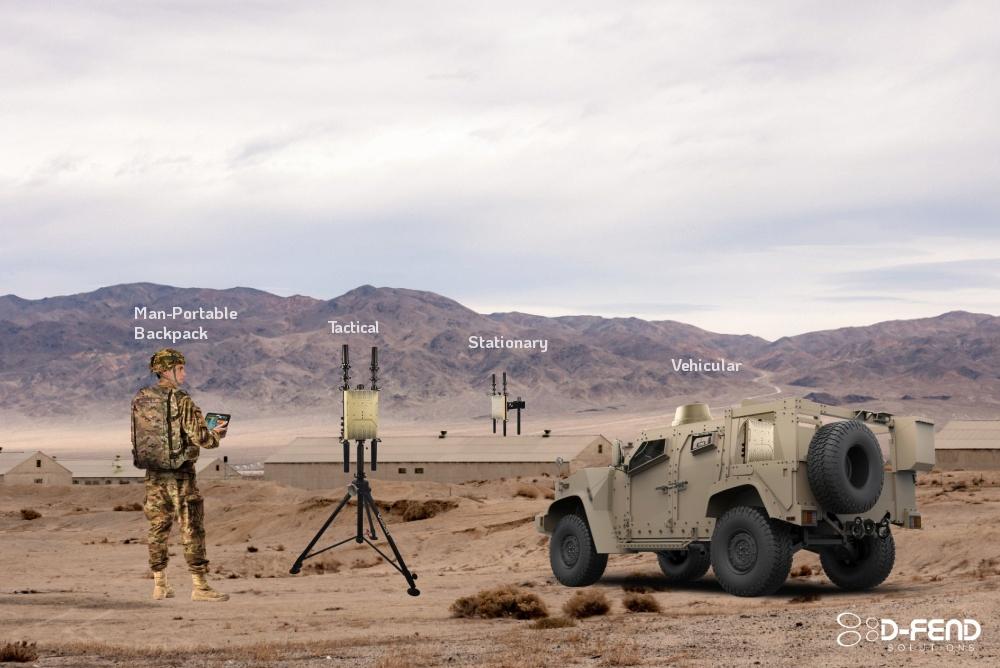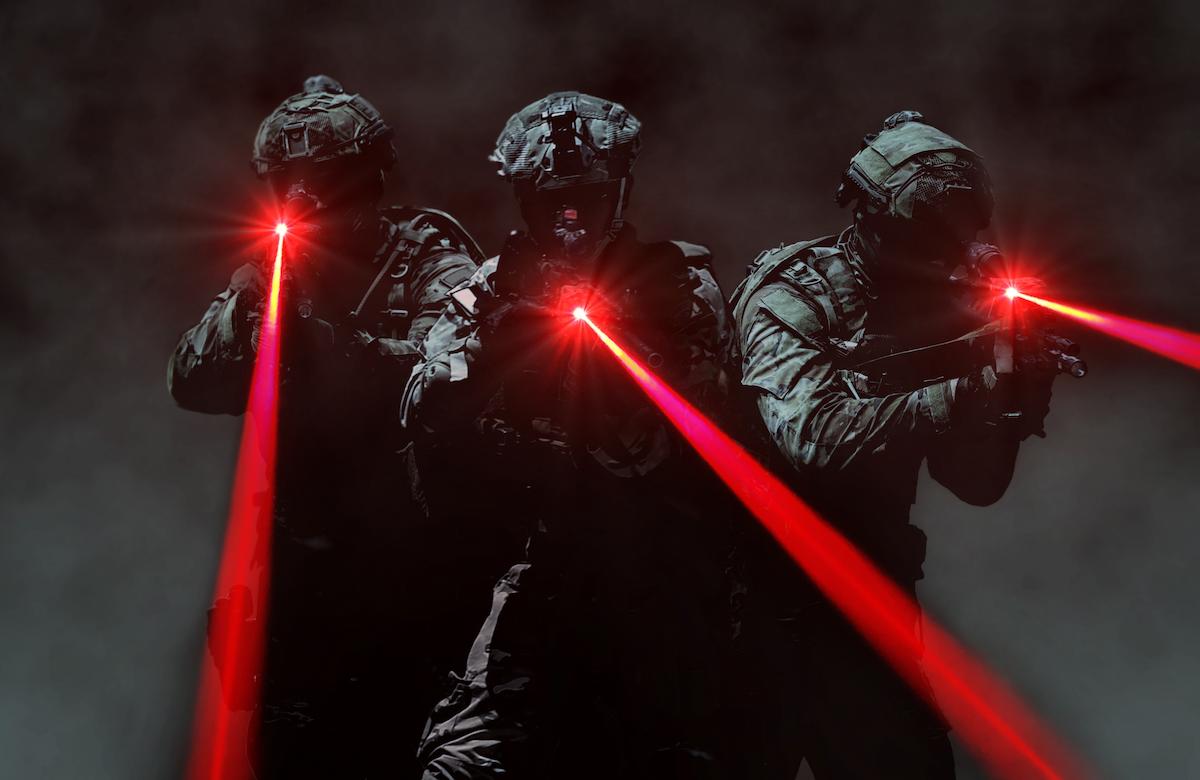The proliferation of unmanned aerial systems (UAS) has reshaped the modern battlefield. Special Operations Forces (SOF) stand on the front lines of this technological shift. As adversaries leverage UAS for surveillance, disruption and attack, SOF units require countermeasures as agile and sophisticated as their own missions. The Department of Defense’s (DoD) newly unified Strategy for Countering Unmanned Systems (UxS) recognizes this urgent need through its emphasis on rapid, adaptable and scalable solutions.
Radio frequency (RF)-cyber counter-UAS technology uniquely fulfills several pillars of the DoD’s approach. It stands out as a critical enabler for SOF by providing decisive advantages in the fight for airspace dominance on the modern battlefield.
The 5 D’s of DoD’s Unified C-UxS Strategy: A New Blueprint for Defense
In December 2024, the DoD unveiled its comprehensive strategy to address the mounting threat posed by UxS across all domains and operational environments. This strategy is built on five key pillars (“The 5 D’s”):
- Deepening understanding of UAS threats
- Disrupting adversary drone networks
- Defending U.S. interests
- Delivering solutions quickly and at scale and
- Designing the future force around unmanned systems realities.

The approach aims to keep pace with the relentless evolution of drone technology and tactics. As such, it calls for layered defenses, rapid acquisition and close collaboration with allies and industry. SOF units, with their need for stealth, flexibility, and precision, are central beneficiaries of this strategy.
Fulfilling the DoD’s Strategic Pillars
RF cyber C-UAS technology directly supports several pillars of the DoD’s new counter-UAS strategy:
- Understanding and Awareness: By providing real-time detection, tracking and forensic analysis, these systems deepen operational awareness of drone threats. This fulfills the strategy’s first pillar.
- Defending U.S. Interests: The ability to neutralize drones without collateral damage or mission disruption addresses the third pillar, making defense against UxS a core warfighting capability.
- Rapid, Scalable Solutions: Software-based architecture and modular hardware enable rapid deployment and updates, which supports the fourth pillar’s mandate for speed, adaptability and scale.
- Disrupting Threat Networks: By capturing and analyzing rogue or enemy drones, RF-cyber C-UAS platforms help identify and undermine adversary UAS networks, which aligns with the second pillar.
Why SOF Needs RF Cyber C-UAS
The DoD’s vision aligns perfectly with the capabilities of RF-cyber C-UAS solutions because they offer non-jamming, non-kinetic and highly adaptable defenses that can be rapidly fielded and scaled to meet dynamic mission requirements.

Precision Without Compromise
Traditional counter-UAS methods, such as jamming or kinetic interception, can disrupt vital communications, risk collateral damage or expose SOF positions. Contrast this with RF-cyber C-UAS technology, which can detect, identify and take control of unauthorized drones and guide them to safe, controlled landing spots without affecting friendly assets or communications. This precision is vital for SOF, who often operate near sensitive infrastructure or in densely populated areas where unintended consequences would be both operational and geopolitically unacceptable.
Operational Continuity and Stealth
SOF missions demand uninterrupted communications and the ability to remain undetected. RF-cyber C-UAS solutions detect threats without generating the type of ongoing electronic “noise” or physical signatures associated with jamming or kinetic options. This ensures that SOF teams can maintain both operational tempo and security, even in contested or cluttered RF environments.
Adaptability and Rapid Response Across Mission Profiles
The DoD’s strategy emphasizes the need for flexible, modular solutions that can be deployed quickly and adapted to different scenarios. RF-cyber C-UAS systems possess inherent versatility. Users can configure them for man-portable use, mount them on vehicles or install them for fixed-site defense. This makes them ideal for the unpredictable and varied nature of SOF – or any combat – operations. Their software-driven design allows for rapid updates to counter new threats, which also aligns with the DoD’s call for solutions that can be delivered “with greater speed, adaptability, and scale.”
Selective Mitigation and Situational Awareness
A cornerstone of the DoD’s new approach involves improving the ability to detect, track and characterize drone threats. RF-cyber C-UAS platforms excel here. They continuously scan the airspace, distinguish between friendly and hostile UAS, and provide real-time alerts and location data. This level of distinction enables selective mitigation to preserve the effectiveness of allied UAS while allowing units to neutralize rogue systems. These capabilities enhance both situational awareness and airspace control for SOF.
Intelligence for the Fight Ahead
The DoD’s strategy also highlights the importance of disrupting adversary drone networks and learning from each encounter. RF-cyber C-UAS systems not only neutralize threats but can also, when allowed, capture valuable data from hostile drones, such as identifiers and operator locations. This enables each incident to become an opportunity for intelligence collection. Such collection informs future threat assessments. This data loop strengthens both immediate tactical responses and long-term operational planning.
Solutions In Action: Field-Proven Technology

The realities of today’s battlefield cry out for multi-domain and multi-layered defense. RF-cyber solutions are a critical component of modern battlespace awareness and protection, across all domains. Challenges at sea, for example, are as dynamic as the sea itself.
C-UAS defensive operations in challenging battlefield environments must address a host of obstacles, from limited visibility and the difficulty of distinguishing drones from other airborne objects to the ever-present risk of collateral damage during mitigation efforts. The sheer scale and complexity of the various terrains of military conflict zones, such as fields, urban settings, mountains or open water, coupled with the constant movement of vehicles and ships, and the unpredictable presence of other vehicles, vessels, and, of course, drones, creates a cluttered and often confusing detection landscape. Darkness and adverse weather only deepen these blind spots to further complicate early warning and responses.
Traditional detection systems frequently falter in this setting. Radars and cameras, for example, may struggle to tell the difference between a small drone and a bird. This can result in a flood of false positives which can erode trust in system reliability – a dangerous mindset to have in high-pressure situations. During mitigation, kinetic solutions risk unintended harm to vehicles, forces or the delicate environment. Even non-kinetic methods like jamming can inadvertently disrupt vital communications and navigation systems. RF-cyber C-UAS solutions provide a sophisticated, tailored counter-UAS solution in such challenging conflict environments.
Even so, not all RF cyber C-UAS technologies are alike. D-Fend Solutions’ EnforceAir system exemplifies the advantages that RF cyber C-UAS can bring to the fight, specifically for SOF. Field-proven in demanding environments, it offers comprehensive airspace monitoring, precise drone takeover and actionable intelligence without interfering with friendly operations or communications across a wide range of operational environments. The adaptability and future-proof designs of RF-cyber C-UAS systems, like those from D-Fend Solutions, ensure SOF teams remain equipped to counter emerging threats at sea or on land, from the air. Its seamless integration with command-and-control (C2) systems supports the level of coordinated, multi-domain defense that SOF needs.
The Future of SOF Airspace Security
The DoD’s C-UxS strategy marks a decisive shift toward unified, agile, and technology-driven defense against UAS and other unmanned threats. For SOF, RF-cyber C-UAS solutions are not just a technological upgrade. They are a mission-critical necessity. By delivering precision, adaptability and intelligence in a rapidly evolving threat environment, RF-cyber C-UAS empowers SOF to maintain airspace superiority, protect the mission and ultimately fulfill the strategic imperative set forth by the Department of Defense.

